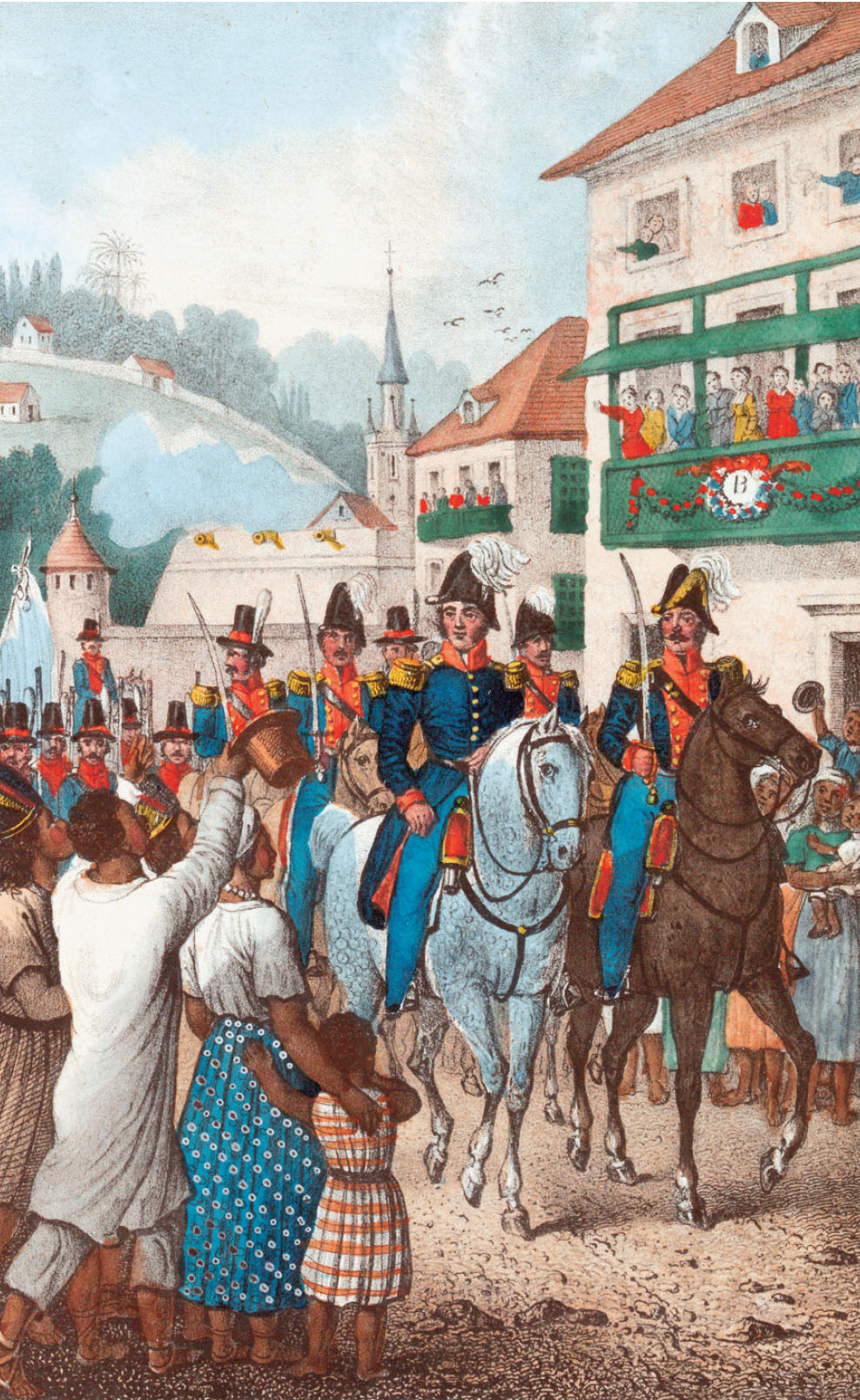A History of World Societies:
Printed Page 678
A History of World Societies Value
Edition: Printed Page 681
Resistance, Rebellion, and Independence
The mid-
As news of the rebellion of Tupac Amaru II trickled northward, it helped stimulate the 1781 Comuneros Revolt in the New Granada viceroyalty (see Map 22.4). In this uprising, an Indian and mestizo peasant army commanded by Creole captains marched on Bogotá to protest high taxation and state monopolies on liquor and tobacco. Dispersed by the ruling Spanish, who made promises they did not intend to keep, the revolt in the end did little to improve the Indians’ lives.
These two revolts (and the many smaller riots and uprisings that broke out through the eighteenth century) shook authorities, but their ties to the independence movements that followed are indirect. Led from below, these uprisings did not question monarchical rule or the colonial relationship between Spain and Spanish America. Instead two events outside of Spanish America did more to shape the ensuing struggle for independence. First, the revolution on Saint-
Second, in 1808 Napoleon Bonaparte deposed Spanish king Ferdinand VII and placed his own brother on the Spanish throne (see “The Grand Empire and Its End” in Chapter 22). The Creoles in Latin America claimed that the removal of the legitimate king shifted sovereignty to the people — that is, to themselves. Like the patriots in British North America, the Creoles who led the various movements for independence had no desire for a radical redistribution of property or a new social order. They merely rejected the authority of the Spanish crown. Cabildos in cities like Buenos Aires and Caracas took power into their own hands, ostensibly on behalf of Ferdinand, the deposed king.

The great hero of the movement for independence was Simón Bolívar (1783–
Bolívar dreamed of a continental union and in 1826 summoned a conference in Panama City of the American republics he had liberated, which included the future nations of Venezuela, Colombia, Ecuador, Peru, and Bolivia. The meeting achieved little, however. The territories of Gran Colombia soon splintered (see Map 22.4), and a sadly disillusioned Bolívar went into exile, saying, “America is ungovernable.”
Under Spain, Mexico had been united with Central America as the Viceroyalty of New Spain. In 1808, after Napoleon’s coup, the Spanish viceroy assumed control of the government of New Spain from its capital in Mexico City. Meanwhile, groups of rebels plotted to overthrow royalist power. Under the leadership of two charismatic priests, poor Creoles and indigenous peasants rose up against the Spanish. This movement from below fell to royalist forces, but in 1821 a new movement commanded by Creole elites succeeded in winning independence from Spain.
Although Creole officers dominated rebel armies, their success depended on a rank and file largely composed of nonwhites. These included many blacks and free people of color, who had come to dominate the colonial militias. In Mexico many indigenous people also fought for the patriots, but elsewhere Indians were often indifferent to independence or felt their status was more secure with the royal government than with the Creoles.
In the 1830s regional separatism resulted in New Spain’s breakup into five separate countries. The failure of political union in New Spain and Gran Colombia isolated individual countries, prevented collective action, and later paved the way for the political and economic intrusion of the United States and other powers. Spain’s Caribbean colonies of Puerto Rico and Cuba remained loyal, in large part due to fears that slave revolt would spread from neighboring Haiti.
Brazil followed a different path to independence. When Napoleon’s troops entered Portugal, the royal family fled to Brazil and made Rio de Janeiro the capital of the Portuguese Empire. The new government immediately lifted the old mercantilist restrictions and opened Brazilian ports to the ships of all friendly nations. The king returned to Portugal in 1821, leaving his son Pedro in Brazil as regent. Under popular pressure, Pedro proclaimed Brazil’s independence in 1822, issued a constitution, and even led resistance against Portuguese troops. He accepted the title Emperor Pedro I (r. 1822–
| 1759– |
Reign of Charles III, who instituted administrative and economic reforms |
| 1794 | Colombian Antonio Nariño publishes the French Declaration of the Rights of Man and of the Citizen |
| July 1811 | Regional congress in Caracas declares independence of the United States of Venezuela |
| 1822 | Proclamation of Brazil’s independence from Portugal |
| 1826 | Call by Simón Bolívar for Panama conference on Latin American union |
| 1830s | New Spain breaks up into five separate countries |
| 1888 | Emancipation of slaves in Brazil |